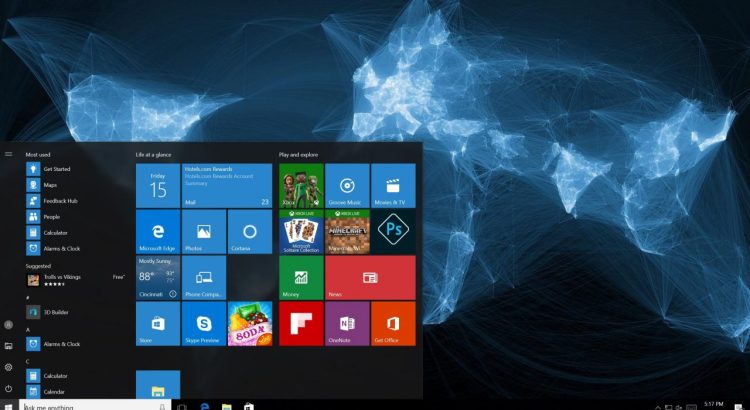Tech by Android – Windows 10 Support is approaching its final chapter as Microsoft officially prepares to end updates and maintenance for the operating system. Millions of users worldwide who still rely on Windows 10 for daily tasks will soon need to make important decisions about upgrading or securing their systems. Since its launch in 2015, Windows 10 has been one of Microsoft’s most widely used and stable platforms, powering both personal and business devices across the globe. However, technology never stands still, and Microsoft’s shift toward newer versions aims to enhance performance, security, and compatibility with modern hardware. This transition marks the end of an era while signaling the beginning of a more advanced digital ecosystem. With the deadline approaching, users are urged to plan ahead, back up essential data, and prepare for what comes next in the Windows evolution.
“Read More: Camila Cabello Sets Out on Her Exciting ‘Yours, C’ Tour”
The End of Windows 10 Support and Its Impact

Microsoft’s decision to end Windows 10 Support marks a significant milestone in its software lifecycle. The official end date means no more security patches, feature updates, or technical assistance for standard users. This transition will affect millions of individuals and businesses still operating on the platform. Without continued support, systems become vulnerable to security threats and performance issues. Microsoft’s focus now shifts to Windows 11 and future versions designed to integrate better with modern devices and cloud infrastructure. The company has encouraged users to evaluate hardware readiness before upgrading, as not all older systems can run the latest operating system efficiently. This end of support emphasizes the importance of regular software updates and proactive planning in today’s fast moving tech landscape. Users who stay on outdated systems risk not only technical instability but also increased cybersecurity exposure.
Preparing for the Upgrade Transition
As the Windows 10 Support deadline approaches, preparation becomes key for a smooth transition. Users should begin by checking whether their devices meet Windows 11 system requirements, including secure boot capabilities and trusted platform modules. For systems that cannot upgrade, alternative options such as purchasing new hardware or exploring other operating systems might be necessary. Backing up important files ensures that no data is lost during the upgrade process. Businesses, in particular, need structured migration plans to minimize disruption across operations. Microsoft provides tools and documentation to guide users through every step of the process. Early preparation prevents last minute complications and helps maintain productivity. The end of Windows 10 Support should not be seen as a burden but as an opportunity to enhance performance, security, and overall user experience with the latest features of modern computing technology.
“Read About: Pokemon Legends Z-A Brings Back Beloved Shiny Sound for Hunters”
Security Risks of Staying on an Unsupported System
Continuing to use a device after Windows 10 Support officially ends exposes users to multiple security risks. Without regular patches, vulnerabilities discovered by cybercriminals will remain unaddressed, making systems easy targets for malware, ransomware, and phishing attacks. Outdated software also struggles to handle newer encryption methods or compatibility standards used by modern applications. For organizations that manage sensitive data, this creates serious compliance and privacy concerns. Even reliable antivirus programs cannot fully compensate for missing system level protections. Hackers often focus on unsupported platforms because they know those users lack the latest defenses. Upgrading to a supported operating system ensures continued access to Microsoft’s security ecosystem, including advanced threat detection and regular updates. The longer users delay migration, the greater the exposure becomes, making timely action essential to maintaining digital safety in an increasingly connected world.
How Microsoft Plans to Support the Transition
Microsoft has outlined several initiatives to make the shift from Windows 10 Support to newer systems as seamless as possible. For enterprises, the company offers extended support programs with paid security updates for a limited time, allowing gradual migration. Meanwhile, home users are encouraged to take advantage of upgrade prompts and automated installation tools. Microsoft’s support pages provide detailed guides, compatibility checkers, and troubleshooting resources to simplify the process. Retailers and hardware manufacturers are also collaborating to ensure customers have access to devices optimized for Windows 11. This coordinated effort demonstrates Microsoft’s commitment to helping users adapt efficiently. The company’s strategy focuses on long term sustainability and innovation, ensuring that users benefit from improved stability, performance, and integration with emerging technologies like artificial intelligence and cloud computing. The transition period thus represents not only a technical update but a step toward a more advanced digital future.
What the Future Holds After Windows 10
As Windows 10 Support comes to a close, the future of Microsoft’s ecosystem points toward greater connectivity, intelligence, and sustainability. Windows 11 and its successors are built to integrate seamlessly with cloud services, virtual desktops, and AI driven features. Users can expect faster updates, enhanced security frameworks, and smoother cross device experiences. Microsoft’s long term goal is to create an operating environment that evolves continuously without the need for major version changes. This approach ensures users remain current without disruptive transitions like those of the past. The focus on design, accessibility, and efficiency reflects a shift toward user centric innovation. For those moving on from Windows 10, the upgrade offers a chance to embrace modern technology that better aligns with the digital lifestyles of today and tomorrow. The legacy of Windows 10 will continue as a foundation for this next generation of computing.



